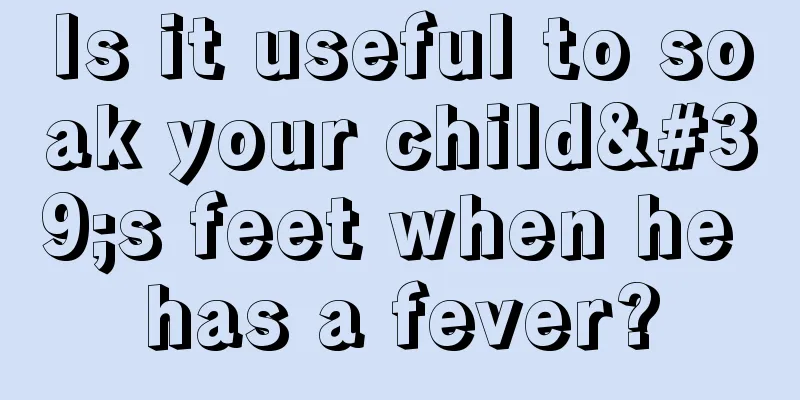Baby has hemangioma on finger

|
Hemangioma is not a tumor, but it is also called a benign tumor. The lesions of hemangioma come from the congenital abnormal development of the vascular network, which is why local hemangiomas are formed. Research has found that many infants are hemangioma patients, and the ratio of boys to girls is about 1:3. Therefore, hemangiomas are relatively large, and they are more harmful when they appear in babies. What should be done if there are hemangiomas on the baby's fingers? What is infantile hemangioma? Infantile hemangioma is a benign tumor that often occurs in infants. The lesions of this disease are caused by the abnormal development of the congenital vascular network. Although it will not cause lesions, the tumor will gradually grow larger with age. Early treatment can help control the hemangioma to the smallest range. Infantile hemangiomas appear at birth or within 1 to 2 months after birth, often on the head, face, and neck, affecting the baby's appearance and causing concern for parents. However, some patients' parents do not know the symptoms of the disease, which delays their treatment. About half of infantile hemangiomas do not appear until the first week or first year of life. Infantile hemangiomas can develop anywhere on the body, but are most common on the surface of the skin. About half of infantile hemangiomas occur on the head, face, and neck, and are most likely to cause appearance problems. As for the cause of the disease, it is not very clear, but it is known to be the result of abnormal embryonic development. According to statistics, the average incidence rate is about 3%. Every year, about 16,000 newborns in China suffer from infantile hemangioma, with a male to female ratio of 1:3. Experts remind parents that if they find their child has a hemangioma, do not wait. Although some hemangiomas have the possibility of resolving on their own, the chance is small. Do not delay your child's treatment just to wait for the slim chance. Hemangiomas in infants and young children should be detected and treated early. Causes of Infantile Hemangioma To cure your baby's problem, you must first understand the cause so that you can prescribe the right medicine. So, what is the cause of infantile hemangioma? Hemangioma is a benign tumor that occurs in vascular tissue. It is mainly a vascular malformation caused by abnormal vascular development during embryonic development, abnormal vascular development or differentiation. It is a true tumor caused by abnormal proliferation of vascular endothelial cells. Although hemangiomas are generally congenital, the causes of their formation are different for each patient and can only be determined by a comprehensive examination at a regular hemangioma specialty hospital. There are many factors that lead to the occurrence of hemangiomas, and there is no generally accepted and affirmative statement so far. It is generally believed that parents' genetics, endocrine disorders, hypertension and other diseases, environmental pollution or microbial infection during pregnancy can affect fetal vascular development. There are many studies on the correlation between the mother's hormone levels and the occurrence of infant hemangioma. It was found that the incidence of hemangioma in children of mothers who took contraceptives before pregnancy was significantly increased; the mother's estrogen level was positively correlated with the incidence of hemangioma in the child, that is, children whose mothers had high estrogen levels were more likely to develop hemangioma. On this basis, many scholars have proposed that as the baby is born and breastfeeding is weaned, the hormone level from the mother in the baby's body gradually decreases, which leads to the natural regression of the baby's hemangioma. Some scholars also use hormones and estrogen receptor inhibitors to treat hemangiomas based on this theory. In short, when you find the appearance of infant hemangioma, you should take your baby to the hospital for examination as soon as possible and cooperate with the doctor's treatment. |
<<: Teenagers leg pain knee pain
>>: Can baby's overeating cause fever?
Recommend
Symptoms of phlegm-damp constitution in children
Children's phlegm-damp constitution may cause...
What should a seven-year-old child eat if he has bad breath?
Bad breath can happen to anyone, even a seven-yea...
What to do if your child is shy
Nowadays, a child’s personality is influenced by ...
How to dissolve phlegm in baby’s nasal cavity?
When we have phlegm in our throat or nasal cavity...
How to deal with red spots on children's feet
The physical health of children is an issue that ...
Can postnasal drip in children be cured?
If children suffer from postnasal drip when they ...
What should I do if my child has prickly heat?
Prickly heat is the most common skin problem in c...
What is the reason for the child's high fever?
Fever is a disease that many children will suffer...
How to eliminate bloating in children?
In daily life, burping and hiccups often occur af...
How to make blueberry puree for baby food
For some babies, you can give them some fruit pur...
Neonatal fundus lesions
In fact, neonatal fundus lesions are also called ...
What is going on when a baby blows bubbles?
In life, many mothers find that their babies blow...
Causes of peeling toes in children
Many children have peeling toes. This situation i...
What to do if your child has a flat nose
Children with flat noses do not need special trea...
What to do if your child is particularly naughty
Children can often be very naughty because childr...









